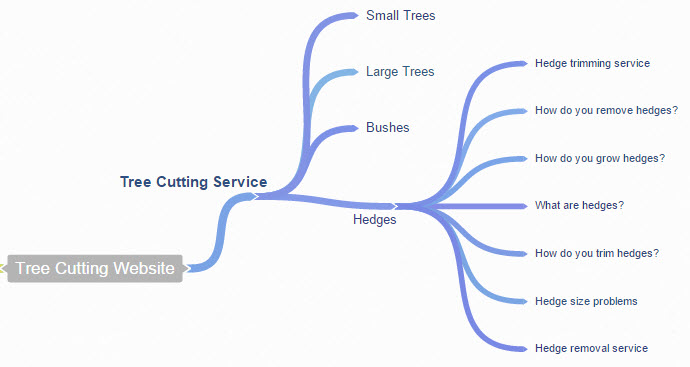In the wake of the most recent MeasureCamp, held in London on March 14th, I have decided to start a series about key trends in analytics.
During the MeasureCamp, beyond the usual lot of (highly interesting) technical workshops, I have identified three trends that are increasingly important for digital practitioners, so as to improve the efficiency of analytics usage, be it for a better understanding of the clients or for a smoother experience of analytics within the organization.
These three trends are:
- using a taxonomy to ensure your website is performing correctly
- defining a balance between ethics and privacy, when coping with regulations
- drawing a path for your analysts to improve their engagement and their relevance
I shall tackle the first topic today, i.e. taxonomy.
 This topic has been a constant interest in my career, namely when I came to work on digital data. I even participated in the development of a patent dealing with this subject (System and method for automated classification of web pages and domains). And I believe that it is of the highest importance to improve the way your data are collected, and hence the efficiency of your analytics.
This topic has been a constant interest in my career, namely when I came to work on digital data. I even participated in the development of a patent dealing with this subject (System and method for automated classification of web pages and domains). And I believe that it is of the highest importance to improve the way your data are collected, and hence the efficiency of your analytics.
To have a good analytics output, it is not enough to have a good Tag management, an efficient SEO strategy or a good budget for ad words (even though all three are blatantly necessary). The optimization of analytics starts with a sound website, aligned with your strategy, properly coded and suitably organized to answer key questions about your users and your customers.
There are two key factors of success, e.g. organizing the whole site in full accordance with your original objectives, and aligning the organization with the experience of the site users.
Aligning the site with the strategy is a blatant point. But not an easy one! The strategy may be altered often, when new products are launched, when fashion trends are evolving, when clients are upgrading (or downgrading) their expectations… But one seldom can afford to change the structure of the site all that often. And throughout time, your site may not be aligned with the company’s goals any more, at least not in all its parts.
The first reaction will be to run bunches of A/B testing to find local improvements, new layouts, better priorities, but this will be short-term fixes, while the tide moves slowly away…
Thinking ahead is definitely better on the long-term, and a proper taxonomy gives you the flexibility to be able to align your websites key measurement points with a volatile strategy. Why? Because a taxonomy is a frame, a container organizer, whereas working solely on the key words, on the “thesaurus” as Heather Hedden says, is a one-shot work.
And it never is too late. Your website does not need to be fully revamped, so as to comply with a taxonomy. You just have to re-think the organization of your internal data, and align key concepts with your SEO strategy, as is very well described in this blog post – “Developing a Website Taxonomy to Benefit SEO” – by Jonathan Ellins from Hallam Internet, a UK-based consultancy. I have inserted one of the graphs used within their post below, showing the kind of decision tree a taxonomy may be generating:
 The interesting thing in this post is that it does not only focus on content, but also on what they call “intent” (I personally call it “context”), which opens the door to alternative ways of organizing one’s website data for improving analytics in the end.
The interesting thing in this post is that it does not only focus on content, but also on what they call “intent” (I personally call it “context”), which opens the door to alternative ways of organizing one’s website data for improving analytics in the end.
This brings me to the second factor of success, considering the user experience.
Beyond intent, there is a much broader scope, i.e. how the user is experiencing the website, and the way he/she browses all the way to the eagerly wanted conversion. The usual way to handle properly such users, is to determine typical personae.
 The personae are very useful here, as they not only show the various ways of navigating into the website, but also allow the identification of key crossings, loops and dead-ends, which are clearly signs of a website that is not aligned with the users’ expectations. And a flexible concept like taxonomy would offer the opportunity to alter the logical links between two pages, so as to modify the browsing in such a way that the user would find his way more easily.
The personae are very useful here, as they not only show the various ways of navigating into the website, but also allow the identification of key crossings, loops and dead-ends, which are clearly signs of a website that is not aligned with the users’ expectations. And a flexible concept like taxonomy would offer the opportunity to alter the logical links between two pages, so as to modify the browsing in such a way that the user would find his way more easily.
In conclusion, it certainly is not easy to revamp one’s site on a regular basis, and not easier to change one’s data management system all too often. In this respect, a taxonomy applied to your website may offer enough flexibility to cope with this ever-changing world, so that you may provide ongoing sensible analytics to your stakeholders, even when they are all too often changing their moods…
Should you be interested to develop such a taxonomy, or at least to discuss about the relevance of such an enhancement, I would gladly be your man. I may be contacted here.
Next week, I shall discuss the impacts of ethics and privacy rules on analytics. Stay tuned!
PS : For those interested in a much deeper approach of the taxonomy concepts, I recommend Heather Hedden’s blog, “The Accidental Taxonomist“. Beware, not for rookies!

Hi Yves-Marie,
Great article! Thanks for opening the discussion, that’s a topic I offen want to talk about but analytics interlocutors are not so ready for it (yes… connection to KPIs is not straightforward).
I think taxonomy is in first place important for UX, SEO, content strategy… so then it helps analytics. It keep the data clean/structured, but more importantly it acts as a facilitator in helping analysts understanding/interpreting the data.
Hierarchical content classification is the most used. But I also really like that one based on the purpose of the content (cf Gary Angel article: http://semphonic.blogs.com/semangel/2006/08/functionalism_a_1.html).
When we talk about interactions classification, I think the field is even less structured. But I would suggest to read this interesting Lego approach from Carmen Mardiros (http://de.slideshare.net/carmenmardiros/the-lego-data-layer).
Cheers from Germany
Julia
LikeLike
Hi Julia,
thanks for the encouraging comment! Actually, I also had read Gary’s blog, but chose to present a – say – less well-known example… Still, purpose of the content is another great way of seeing things, an addition to the others for sure. I personally used to advocate “content, “context” and “activity” as the three main axis. Already a very dense program…
As for Carmen’s approach, I attended her speech at MeasureCamp V in September 2014, it was one of the most brilliant I ever had across all MeasureCamps! And for sure an inspiring one…
Best regards from London,
YML
LikeLike